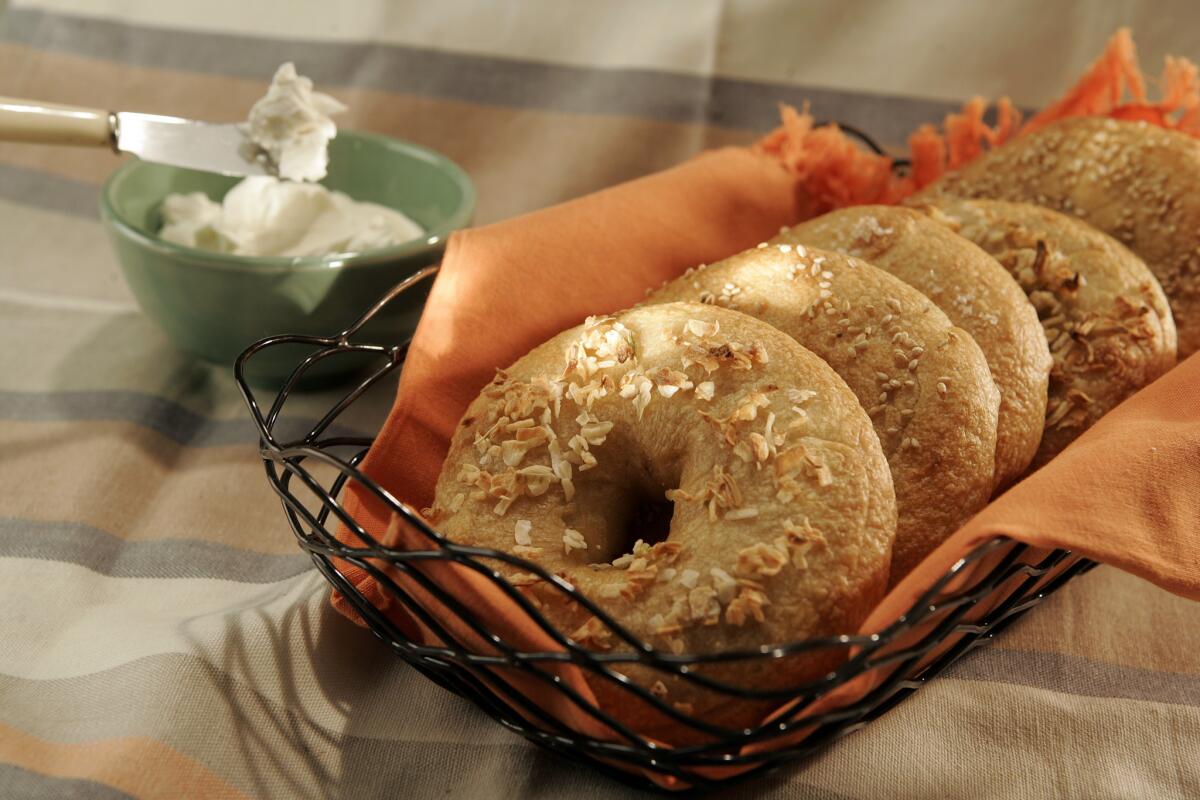
What I am about to explain could get me barred from the Lincoln and Holland tunnels or any other routes into Manhattan. But as a baker who loves bagels and all the things that can go on them, I am duty-bound to dispel urban legends and to tell you that anyone can make great bagels at home, no matter where you live.
In fact, after making these at home, if you do happen to be on Manhattan’s Upper West Side and decide to stop in at H&H for old time’s sake to pick up a bagel or six, I think you will discover that your memory of their singular greatness is only in your mind.
Here’s one of the secrets: It is not about the water, it is all about long, slow, cold fermentation. Knowing this one fact could change your baking life forever.
Bagels are about the simplest of all breads to make. A little flour, water, salt, yeast and barley malt syrup (or honey) is all it takes. The secret ingredient is time. Any decent bagel shop knows this and uses an overnight method to stretch out the fermentation, allowing chemical and biological processes to work on the dough for at least 12 hours, releasing all sorts of subtle flavors trapped in the flour.
Though bagel shops often use a type of high-protein flour not available to home cooks to achieve that distinctively chewy texture, the fact is that unbleached bread flour from any major supplier ( General Mills, Pillsbury, King Arthur, Bob’s Red Mill, Hodgson Mill, etc.) will do the trick.
Unlike baguettes and other European hearth breads that use a high percentage of water to achieve a soft, open-holed texture, bagels are made with a much lower percentage of water, producing a stiff dough that can stand up to being dunked in boiling water before going into the oven for the final bake.
This boiling step, more than any other, defines the uniqueness of the bagel. A number of bagel companies now skip the boiling (really, more like poaching) and use steam-injected ovens, but this produces a different sort of product, kind of a hybrid bagel/French bread texture that some people (but not all) like.
A die-hard bagel freak like me, or my friends, however, refuses to call this product a bagel but rather think of it as a knockoff, like a fake Prada or Gucci bag.
Finally, the one distinctive ingredient that bagels usually feature is barley malt. Though this seems like an exotic, hard-to-find product, it is available at many markets, usually labeled barley malt syrup and shelved with other syrups. It looks like dark honey or molasses. The syrup is made from sprouted and then cooked barley, a process that releases a lot of maltose sugar from the grain.
If you cannot find it, substitute an equal amount of honey. Your bagels might not have the malty flavor of memory, but they will still be better than almost any bagel you can buy. This type of malt syrup is not enzymatic, as some malt powders are (known as diastatic malt because the diastase enzymes from the barley are still active), but is considered non-diastatic (the enzymes are denatured, or destroyed, by the heat that turns the syrup dark). Malt syrup, by the way, is strictly a flavor enhancer, not a dough conditioner.
You now know more about bagels than 99% of the people who eat them. If you follow the steps in this recipe (a great activity, by the way, to do with kids 6 and older), you will soon be making bagels that rival any memory in your bagel hall of fame. Expect your New York friends to show up at your door.
Reinhart is the author of “Whole Grain Breads.”